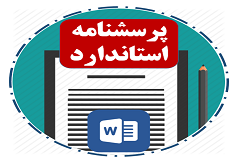Table of Contents
Title………………………………………………………………………….. II
Acknowledgements ………………………………………………………. III
Dedication …………………………………………………………………. IV
Table of Contents …………………………………………………………. V
List of Tables ……………………………………………………………… IX
List of Figures …………………………………………………………….. X
Abstract …………………………………………………………………… 1
Chapter One:
-
Background of the Study ….……………………………………..… 3
1.2. Statement of the Problem …………………………………………. 4
1.3. Significance of the Study …………………………………………. 6
1.4. Research Questions ……………………………………………….. 8
1.5. Research Hypotheses ……………………………………………… 8
1.6.Limitations and Delimitations of the Study …………………..….. 9
1.7.Definition of Key Terms …………………………………………… 11
Chapter Two: Review of the Related Literature
2.1. Overview: ………………………………………………………… 12
2.2. Self-Regulation ……………………………………………………. 13
2.2.1. Nature of Self-Regulation …………………………………. 13
|
2.2.2. Self-Regulation Theory ……………………………………. 14
2.2.3. Phases of Self-Regulation ……………………………………… 15
2.2.3.1. Self-Regulative Strategies …………………………………… 17
2.2.3.2. Self-Regulated learning ……………………………………… 18
2.2.4. Self-Regulated Teachers ……………………………………….. 20
2.2.5. Self-Regulation in EFL context ………………………………… 22
2.3. Effective Teaching ……………………………………………….. 23
2.3.1. Characteristics of EFL Teachers ………………………………. 24
2.3.2. Effective Language Teacher …………………………………… 25
2.4. Self-Efficacy ……………………………………………………… 29
2.4.1. Concept of Self-Efficacy ………………………………………. 29
2.4.2. Role of Self-Efficacy …………………………………………… 30
2.4.3. Teachers’ Self-Efficacy ………………………………………… 30
2.4.4. EFL Teachers’ Self-Efficacy …………………………………… 33
2.5. Resiliency ………………………………………………………… 34
2.5.1. Resiliency Theory ……………………………………………… 34
2.5.2. Resilience Characteristics ……………………………………… 35
2.5.3. Resilience Strategies …………………………………………… 36
2.5.4. Resilient Teachers ……………………………………………… 38
|
Chapter Three: Methodology
3.1. Overview ……………………………………………………………. 40
3.3. Participants ………………………………………………………. 40
3.4. Instrumentation …………………………………………………… 41
3.4.1. Teachers’ Self-Regulation Scale (TSRS) ……………………. 41
3.4.2. Qualities of Successful Iranian EFL Teachers Questionnaire .. 42
3.5. Procedures ………………………………………………………… 43
3.6. Data Analysis …………………………………………………….. 44
Chapter Four: Results
4.1. Overview ……………………………………………………………. 46
4.2. Descriptive Statistics for EFL Teachers’ Self-Regulatory ………. 47
4.3. Descriptive Statistics for Effective EFL Teachers ……………….. 49
4.4. Inferential Statistics for the First Hypothesis …….……………… 52
4.5. Descriptive Statistics for EFL Teachers’ Self-efficacy…………… 53
4.6. Inferential Statistics for the Second Hypothesis……………….….. 55
4.7. Descriptive Statistics for EFL Teachers’ Resiliency …………….. 57
4.8. Inferential Statistics for the Third Hypothesis…………………………… 58
|
4.9. Descriptive Statistics for EFL Teachers’ Gender …………………….. 60
4.10. Inferential Statistics for the Forth Hypothesis…………………………. 62
4.11 Descriptive Statistics for EFL Teachers’ Years of Experience…… 64
4.12. Inferential Statistics for the Fifth Hypothesis…………………………… 66
4.13. Regression ………………………………………………………… 67
Chapter Five: Conclusion
5.1. Overview ………………………………………………………………. 71
5.2. Discussion ……………………………………………………………… 71
5.3. Conclusion ………………………………………………………………. 75
5.4. Pedagogical Implication ……………………………………………… 78
5.5. Suggestions for Further Study ……………………………………….. 80
References …………………………………………………………………. 66
Appendix A: Teachers’ Self-Regulation Scale …………………………….. 82
Appendix B: Questionnaire on Qualities of an Effective English Language Teacher……………………………………………………………………… 94
Appendix C: Teachers’ Self-Regulation Scale (Persian Version) …………. 97
Appendix D: Questionnaire on Qualities of an Effective English Language . 100
Teacher (Persian Version) …………………………………………………. 104
Persian Abstract ……………………………………………………………. 107
|
List of Tables
Table 4.1: Statistical Descriptive Data of EFL teachers’ self-regulatory ………………………………………………………………………………………………. 48
Table 4.2: Frequency and Cumulative Percentage of EFL School Teachers’
Self-Regulatorytrait ………………………………………………………. 49
Table 4.3: Frequency and Cumulative Percentage of Effective Teachers ……………………………………………………………………………… 51
Table 4.4: Relation between EFL Teachers’ Self-regulatory and
Teachers’Effectiveness …………………………………………………… 52
Table4.5: Statistical Descriptive Data of EFL Teachers’ Efficacy……….. 54
Table 4.6: Relation between EFL Teachers’ Self-regulatory and
Teachers ‘Self-Efficacy ………………………………………………….. 56
Table4.7: Statistical Descriptive Data of EFL Teachers’
Resiliency ………………………………………………………………… 57
Table 4.8: Relation between EFL Teachers’ Self-regulatory and
Teachers’ Resiliency………………………………………………………. 59
|
Table 4.9: Statistical Descriptive Data of EFL Teachers’ Gender …………. 60
Table 4.10: EFL teachers’ gender Cross Tabulation ………………………. 61
Table 4.11: Relation between EFL Teachers’ Self-regulatory and
Teachers’ Gender …………………………………………………………. 62
Table4.12:Chi-Square Tests (x2) ………………………………………… 63
Table4.13: EFLTeachers’ Years of Experience in Teaching …………… 65
Table.4.14: Relation between EFL Teachers’ Self-regulatory and Years of Experience………………………………………………………………… 67
Table.4.15: ANOVA Table of Regression …………………………..…. 68
Table.4.16: The Results of Regression Analysis for Teachers’ Self-efficacy,
Their Years of Teaching Experience and Teachers’ Self-regulation ……… 69
Table 4.17: Model summary ……………………………………………….. 70
|
List of Figures
Figure4.1: Distribution of EFL Self-regulated Teachers ……………….. 47
Figure 4.2: Distribution of EFL Self-regulated Teachers ………………. 50
|




